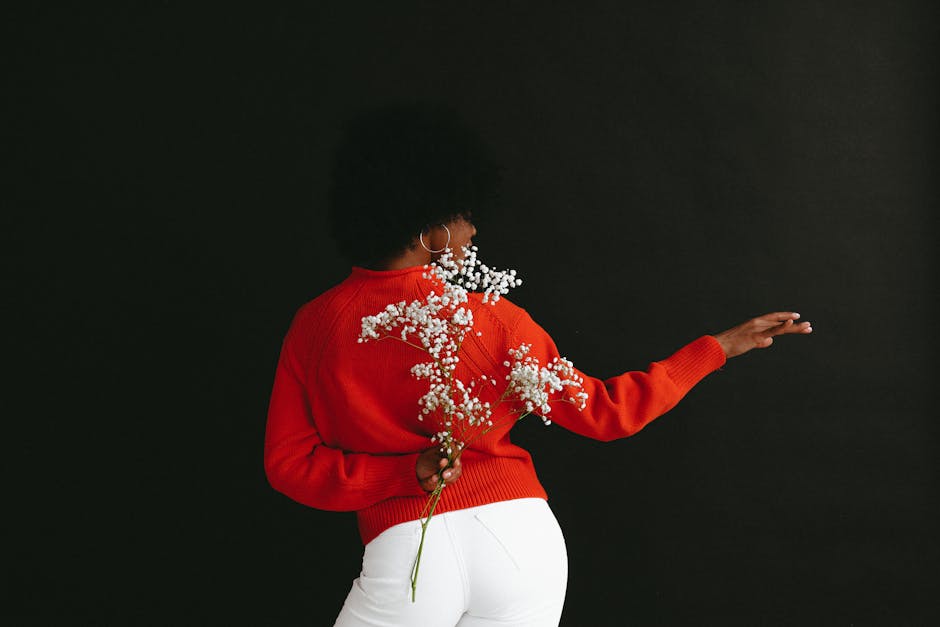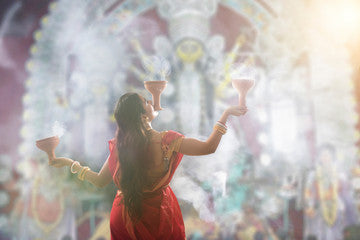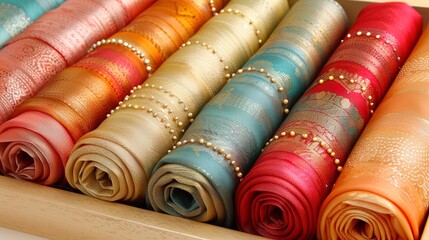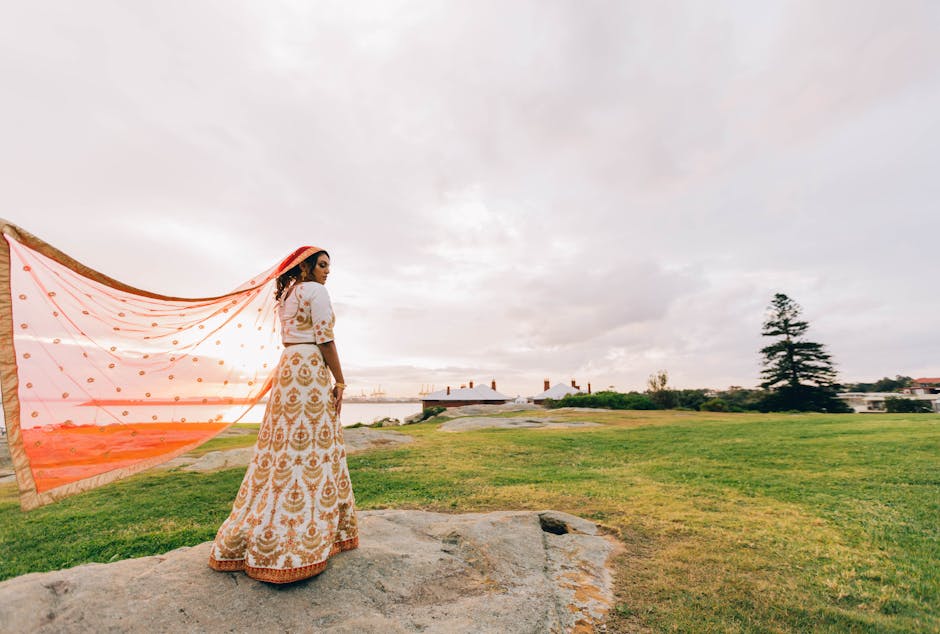Why Women's Ethnic Wear is More Than Just Clothing
Introduction to Women’s Ethnic Wear: Beyond Just Clothing
Women’s ethnic wear is not just clothing; it’s a language. It speaks volumes about a culture, its history, and the stories of countless generations. Whether it’s the vibrant Sarees from India, the elegant Kimonos from Japan, or the bold Dashikis from Africa, each piece tells a story of its own. They’re crafted not just with fabric but with traditions, making them more than mere outfits. These pieces carry the essence of their culture, showcasing intricate designs, patterns, and techniques perfected over centuries. They embody the identity and pride of the people, often symbolizing a connection to one’s roots and heritage. Through colors, textures, and styles, women’s ethnic wear goes beyond fashion, serving as a bridge to the past, while continuing to evolve with contemporary trends. It’s a celebration of diversity, creativity, and the enduring spirit of communities around the world.
Historical Significance of Women’s Ethnic Wear
Women’s ethnic wear goes way beyond just being clothes to wear. It symbolizes a rich tapestry of customs, traditions, and the heritage passed down through generations. Each fabric, pattern, and color tells a story, connecting the wearer to their ancestors and the legacies of their homeland. In many cultures, specific outfits are worn for particular ceremonies or festivals, signifying the importance of these events. For instance, the Sari, worn by Indian women, is over 5,000 years old and reflects various regional art forms, religious beliefs, and social statuses. Similarly, the Kimono in Japan, with its intricate designs and seasonal patterns, conveys the wearer’s age, marital status, and level of formality required for an occasion. This connection between clothing and cultural identity is what makes women’s ethnic wear so significant. It’s not merely about fashion; it’s a living, breathing representation of history and identity.
Symbolism in Patterns and Designs
Patterns and designs in women’s ethnic wear are not just for show. They carry deep meanings and stories from the past. For example, intricate patterns might celebrate nature, showing flowers, animals, or the sun. These symbols can represent fertility, strength, or a connection to the earth. In many cultures, specific colors and designs are worn for special occasions like weddings or festivals, each carrying its unique significance. Red might symbolize love and courage, while green could stand for new beginnings. It’s like wearing a piece of history and identity. These patterns and designs are a way for women to connect with their heritage, showing pride in where they come from and the stories of their ancestors. So, when you see someone wearing ethnic attire with intricate patterns, remember there’s likely a rich tale woven into those threads.
Women’s Ethnic Wear and Cultural Identity
Women’s ethnic wear is not just about looking good. It’s a powerful expression of cultural identity and heritage. Across the globe, traditional outfits like the saree in India, the kimono in Japan, and the hanbok in Korea, have stories to tell. These stories are woven into the fabric, designs, and patterns, carrying centuries of history, beliefs, and values. When a woman wears her ethnic attire, she is not merely choosing a piece of clothing. She is embracing her roots, showcasing pride in her ancestry, and connecting with a community that shares a common history. This clothing goes beyond the material. It’s about celebration, respect, and a deep sense of belonging. In a rapidly globalizing world, ethnic wear stands as a reminder of who we are and where we come from. It’s a bridge between the past and the present, a vibrant testament to the enduring strength of cultural identity.
The Evolution of Women’s Ethnic Wear Through the Ages
Women’s ethnic wear has undergone a remarkable transformation over the centuries, evolving not just as clothing but as a rich tapestry of cultural history. In ancient times, simplicity ruled, with garments reflecting the practical needs of the era. Fast forward to the Middle Ages, and you see a stark shift - clothing became an indicator of social status and wealth, with intricate designs and luxurious fabrics like silk making their entrance.
As we stepped into the modern era, a blend of traditional and contemporary styles began to emerge. Ethnic wear today is not bound by strict traditions but is influenced by global fashion trends while still holding onto its cultural roots. This evolution mirrors societal changes, including shifts in women’s roles and the gradual fusion of cultures.
For instance, the sari, a traditional Indian attire, has seen countless variations in draping styles, fabrics, and designs, each telling a story of its time. Likewise, kimonos in Japan transitioned from complex patterns to more subdued and practical designs during certain periods.
This journey of women’s ethnic wear through the ages highlights that it’s more than just clothing. It’s a testament to resilience, adaptability, and the enduring nature of cultural identity.
The Role of Women’s Ethnic Wear in Traditional Ceremonies and Festivals
Women’s ethnic wear isn’t just clothing; it’s a deeply rooted symbol of tradition and identity, especially during traditional ceremonies and festivals. In many cultures, specific outfits like sarees in India, kimono in Japan, or hanbok in Korea are not merely choices of fashion. They represent a connection to history and heritage. During weddings, festivals, or religious ceremonies, these garments take on extra significance. For instance, the color, pattern, and style of a saree might signify marital status, region, or even a specific blessing for the event. Similarly, wearing a kimono during tea ceremonies or festivals in Japan isn’t just about looking good; it’s about respect, tradition, and participating in a cultural narrative that dates back centuries. Each garment, with its unique designs and craftsmanship, tells a story of the people, their land, beliefs, and aspirations. So, when women don these ethnic wears, they’re not just dressing up. They’re embracing their identity, paying homage to their ancestors, and keeping their cultural flame alive for the next generation.
Modern Interpretations and Trends in Women’s Ethnic Wear
Today, women’s ethnic wear isn’t just about sticking to traditions. It’s about blending, experimenting, and making a statement. Designers are constantly innovating, so you’ll see traditional pieces like sarees, kurtas, and lehengas getting stylish twists. Let’s dive into what’s hot right now. Fusion wear is huge. Imagine pairing a long slit kurta with jeans or throwing a denim jacket over a lehenga. It’s all about mixing traditional elements with modern touches. Then, there’s the rise of sustainable fabrics. More women are choosing outfits made from eco-friendly materials, showing that fashion can be both beautiful and responsible. Don’t forget about bold patterns and bright colors. They’re everywhere, turning heads and starting conversations. Ethnic wear isn’t just clothing; it’s a canvas for personal expression. Whether you’re adding a modern accessory to a traditional outfit or choosing garments that speak to the latest trends, the way you wear ethnic clothing today tells a story all its own.
The Impact of Women’s Ethnic Wear on Fashion Industry
Women’s ethnic wear has deeply influenced the fashion industry, reshaping trends and boosting innovation. Brands and designers look to traditional attire to draw inspiration, creating collections that blend the old with the new. This isn’t just about aesthetics. Ethnic wear has spurred a movement towards sustainability and ethical fashion. More consumers now prefer clothes that tell a story, are unique, and have a lower environmental footprint. As a result, demand for handcrafted and heritage pieces has surged, pushing the industry to prioritize craftsmanship and tradition over fast fashion. This shift has opened global markets for indigenous craftspeople, providing them a platform to showcase their art on the world stage. So, when we talk about the impact of women’s ethnic wear, it’s a tale of cultural preservation, innovation, and a step towards a more conscious and inclusive fashion world.
Preserving Tradition: The Importance of Women’s Ethnic Wear
Women’s ethnic wear isn’t just about looking good; it’s a living narrative. Each piece tells a story, connecting wearers to their roots, culture, and traditions. Much more than mere clothing, ethnic attire represents the identity and heritage of a community. Think of the sari in India, the hanbok in Korea, or the kimono in Japan; each is rich in history and significance. Wearing these outfits is a form of preserving tradition, ensuring that the unique customs and artistry of various cultures continue to thrive and are passed down through generations. It’s also a statement of pride, allowing individuals to showcase their cultural background with honor and beauty. In a globalized world, where modern and western styles tend to dominate the fashion scene, choosing to wear ethnic garments is a powerful act of cultural preservation and celebration.
Conclusion: Embracing the Depth and Beauty of Women’s Ethnic Wear
Women’s ethnic wear is not just clothing; it’s a celebration of heritage, culture, and personal identity. These pieces tell stories, honor traditions, and connect individuals to their roots. By choosing to wear ethnic attire, women support the preservation of craftsmanship and contribute to the sustainability of these arts. Beyond the aesthetic appeal, each piece holds a deeper meaning and showcases the wearer’s respect for their lineage. So, when you opt for ethnic wear, remember, you’re embracing a piece of history, a work of art, and a symbol of pride. This choice is a powerful way to express individuality while honoring the past and shaping fashion’s future. Keep celebrating the depth and beauty of women’s ethnic wear, for it’s more than just clothing—it’s a rich tapestry of life itself.






